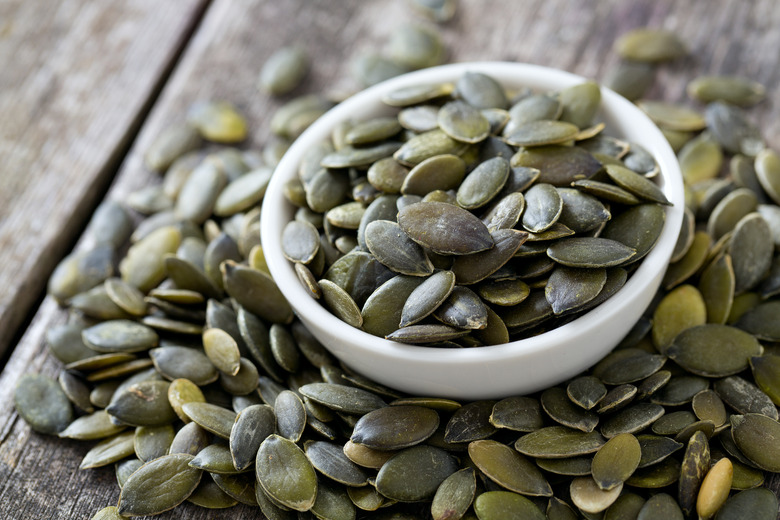When To Plant Pumpkin Seeds For Halloween?
Every holiday has its iconic symbol, and for Halloween, it's a pumpkin (Cucurbita maxima). This "scary" evening of trick-and-treating wouldn't feel very special without the carved pumpkin grinning at you as the candle inside it flickers. So, if you are a gardener, why not start growing fall pumpkins for Halloween? But you'll have to start sowing pumpkin seeds in the garden well in advance of the holiday. The exact date depends on the weather in your home area and the type of pumpkin you decide to grow.
Planting Pumpkin Seeds
Planting Pumpkin Seeds
Pumpkins are true North American natives. Fossil evidence suggests that the pumpkin has been growing on the continent for nearly 5,000 years. It's always a blast to watch these colorful veggies take form in the garden, but you can grow pumpkins in large containers as well, if you're short of space.
If you are planting pumpkins for Jack o' Lanterns, be sure to get started early. All pumpkins have long growing seasons that can last anywhere from 75 to 100 days, depending on weather and cultivar. So get those seeds in the soil as early as possible. If you live in a northern climate, you'll usually need an extra month of field time, so think late May. But don't jump the gun, either. While the mature pumpkin has a tough skin, the seedlings are actually quite tender and require warm soil to thrive. In southern states, you can plant as late as early July.
Pumpkin Seed Germination
Pumpkin Seed Germination
In order to get your pumpkin project underway as swiftly as possible, you'll want to sow the seeds in a sunny location. A spot with light shade can also work, although pumpkin seed germination may take a little longer. Pumpkins, like winter squash, grow on sprawling vines that snake their way over the soil. Give each one enough elbow room.
Many gardeners like to plant pumpkins on hills, but this requires a large garden. If you put the hills in the center of the garden, you'll need between 50 and 100 square feet for each hill. You can also just plant pumpkins at the very edge of the garden and let them twine across the lawn. Alternatively, it's also possible to plant pumpkins in containers. Use large buckets with bottom drainage that hold 10 gallons of soil.
As for soil, pumpkins like it rich but well draining. Adding compost helps accomplish both of these goals, so work it into the garden site or container soil before you even sow seeds. Warm soil means happy pumpkins, and the optimum soil temperature for this crop is 95 degrees Fahrenheit. That's why it's such a good idea to sow the seeds in hills or mounds of soil, since the soil warms more quickly when raised. It also makes for good drainage. The hills should be spaced at least four feet apart.
Sow more than one pumpkin seed in each pumpkin hill, up to five seeds. Expect pumpkin seed germination within a week. You'll see the seedlings a few days after. Of course, you can't allow five pumpkin plants to grow per hill. Instead, thin out each hill's crop to one or two of the strongest seedlings.
Care of Fall Pumpkins
Care of Fall Pumpkins
Weeds are the enemies of pumpkin plants, so hoe and cultivate the soil regularly. Care of pumpkin plants also includes regular irrigation during any dry periods. You'll need those pumpkin blossoms to be pollinated by bees, so skip pesticides and insecticides.
Ideally, you'll be able to leave your pumpkins on the vine until mid to late October. They are ready for harvest when they are a deep orange with a hard rind. But you'll need to get them harvested before the first heavy frost. If need be, harvest in late September and store them in a warm, dry place until Halloween. Leave 4 inches of stem on the pumpkin when you harvest since this helps the plants store well.
